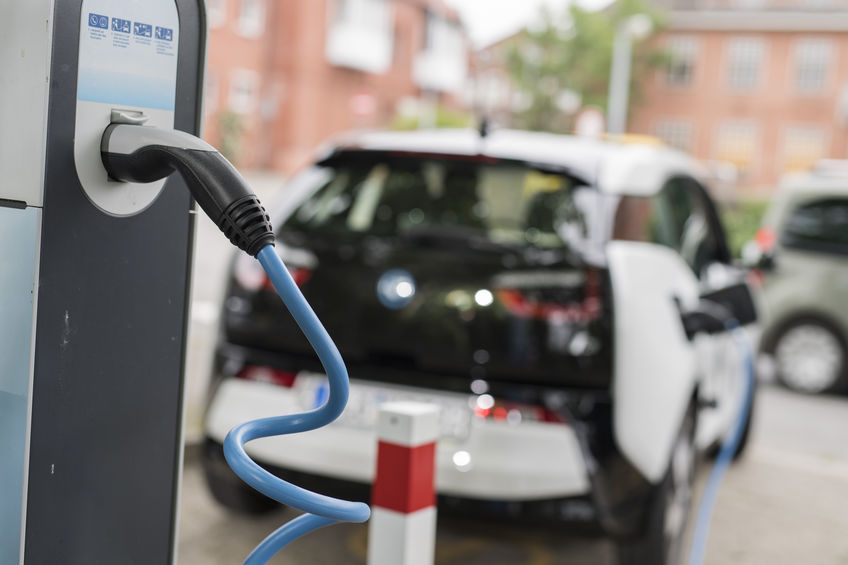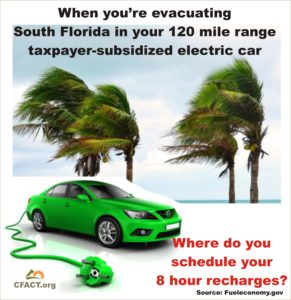With more than forty percent of the EV’s in America being in California at the end of 2020, the EV popularity in California has gotten President Biden so excited to want the rest of the country to follow California’s lead that Biden issued a new executive order that pushes for half of all new cars sold in America by 2030 to be electric vehicles.
Imagine being stuck on a frigid night inside your car, like those stopped on Interstate 95 in Virginia in a 48-mile backup for nearly a 24-hour standstill because of snow. Imagine being trapped in an frozen electric car with a long dead battery!
Even with the great California year-round weather, the states’ EV user’s experiences do not bode well for projected EV sales in America as the states’ EV users may be sending a caution-to-the-wind (no pun intended) message to America that the EV usage in the state reflects very conservative notices to future EV owners. A few reasons why Californians may be sending the wrong message to America are:
-
The limited usage of the EV’s of about 5,000 miles per year is a reflection that the EV is a second vehicle, for those that can afford them, and not the family workhorse vehicle.
-
The primary owners of EV’s are the highly educated and financially well off, and not representative of the majority.
-
EV owner incomes rank among the highest in the country which may be a reflection of home owners that have easier access to charging their EV from their multi-car garages, or for those folks living in new apartments that may have access to more convenient EV charging capabilities. Most car owners park in the street.
- According to ValuePenguin insurance, because electric vehicles cost more outright and are more expensive to repair, the average car insurance for an electric vehicle is about 23 percent more expensive than the cost for the equivalent combustion model.
-
The ethnicity of Tesla owner’s skews toward Caucasians, at 87 percent. Owners who identify with Hispanic ethnicity make up 8 percent of Tesla owners, leaving 5 percent to other ethnicities.
-
From that limited elite ownership group, there is a growing percentage of those California EV users that are switching back to gasoline cars, which is sending a message that may further deflate EV growth projections.
EVs are still a luxury product that attract the Benz and Beemer crowd, not low- and middle-income consumers. The average household income for EV buyers is about $140,000. That’s roughly nearly twice the US median, which is about $63,000.
Here are a few examples of inclement weather conditions, that will most likely never occur in the idyllic year-round weather of sunny California’s EV “capital” of America:
-
Imagine Florida with a hurricane coming toward Miami. The Governor orders an evacuation. All cars head north. They all need to be charged in Jacksonville. How does that work? If all cars were electric, and were caught up in a three-hour traffic jam with dead batteries, then what? Not to mention that there is virtually no heating or air conditioning in an electric vehicle because of high battery consumption.
-
If you get stuck on the road all night, no battery, no heating, no windshield wipers, no radio, no GPS (all these drain the batteries), all you can do is try calling 911 to take women and children to safety. But they cannot come to help you because all roads are blocked, and they will probably require all police cars will be electric also. When the roads become unblocked no one can move! Their batteries are dead.
-
How do you charge thousands of cars in the traffic jam? Same problem during summer vacation departures with miles of traffic jams. There would be virtually no air conditioning in an electric vehicle. It would drain the batteries quickly. Where is this electricity going to come from? Today’s grid barely handles users’ needs.
-
Frigid driving conditions: Did you know that 17 percent of car crashes in the United States happen in winter conditions? EV batteries must work harder in the cold, which is why they drain quickly in extreme temperatures. Low temperatures, such as 40 degrees or below, can decrease the driving range for EVs by 40 percent.
As Pew Research reported in June, “In each of the past three years, EVs accounted for about 2% of the U.S. new-car market.” The reasons why EVs aren’t grabbing consumers by the tailpipe are many, but the main ones are affordability, charging and range functionality, and the possible exposure to inclement weather.
Another challenge for the EV growth is the EV charging dependence on intermittent electricity generated from breezes and sunshine. Adding EV charging loads onto the grid that is becoming more unstable is like putting salt in the wound. Power outages are now commonplace in California and Texas with more to follow throughout the nation as we adjust to a life dependent upon the time of day and the weather.
Amid tougher emissions regulations worldwide, established automakers are racing to add more EVs to their lineup, but until the current elite owners can demonstrate to the middle-income and those on fixed incomes that their EV’s are their primary family workhorse vehicles, the less fortunate will most likely remain reluctant to buy into the EV evolution.
Growing the supply chain for EV’s without a corresponding growth in demand, could be an economic disaster in the works.

